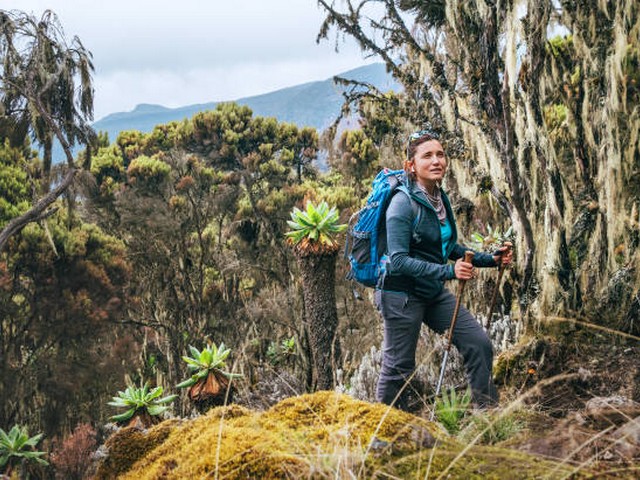Essential Trekking Gear For High-Altitude Climbs: Your Ultimate Guide
Embarking on a high-altitude trek is not just a journey through nature but a voyage into your own endurance and spirit. Whether you’re setting your sights on the majestic heights of Mount Kilimanjaro or any other towering summit, the right gear is your best ally. At Kilimanjaro Centre for Trekking and Ecotourism (KCTE), we understand the pulse of the mountain trails and what it takes to conquer them. Here’s an in-depth guide to essential trekking gear that ensures your adventure is as breathtaking as the views from the top.
Understanding High-Altitude Climbing
High-altitude climbing presents unique challenges, including thinner air, unpredictable weather, and rugged terrain. Preparing with the appropriate gear is crucial not only for your comfort but for your safety too. Each item in your backpack is a tool to help you tackle the elements, from biting cold winds to rocky paths.
The Essentials: Gear Up for the Challenge
H2: Clothing: Layer Up for Protection
Base Layer: Start with a moisture-wicking base layer that keeps you dry and comfortable. For materials, think merino wool or synthetic fabrics that offer breathability and quick drying.
Insulating Layer: Your middle layer should insulate and retain body heat. Fleece or down jackets are ideal, as they provide excellent warmth-to-weight ratios.
Outer Layer: The shield against the elements. A durable, waterproof, and windproof jacket is crucial for protection against harsh weather.
H2: Footwear: Step Wisely
Hiking Boots: Invest in high-quality, durable boots designed for mountain terrain. Look for features like good ankle support, sturdy soles with excellent grip, and weather-resistant materials.
Socks: Don’t underestimate the power of good socks. Choose wool or synthetic socks that cushion and keep feet dry. Consider bringing a few pairs to change into as needed.
H2: Backpack: Your Essential Companion
A reliable backpack is your lifeline during the trek. Opt for a pack with enough capacity for your climb (usually 40-65 liters), adjustable straps for comfort, and multiple compartments for easy access to gear.
H2: Sleeping Gear: Rest Assured
Sleeping Bag: High-altitude nights are freezing. A sleeping bag rated for temperatures lower than you expect to encounter is advisable. Down sleeping bags are preferred for their warmth-to-weight ratio.
Sleeping Pad: A good sleeping pad not only provides comfort but also insulation from the cold ground. Choose one that balances comfort, weight, and insulation.
H2: Climbing Equipment: Safety First
Trekking Poles: These are invaluable for both ascending and descending, helping to reduce the impact on your knees and improve balance.
Headlamp: With early starts and late finishes, a headlamp is a must. Ensure it’s bright enough for nighttime navigation and durable.
Gloves and Hat: Protect your extremities. Waterproof gloves and a warm hat are essential, especially as you ascend to colder zones.
H2: Nutrition and Hydration: Fuel Your Climb
Water Purification: Access to clean water is critical. Bring purification tablets or a portable water purifier.
Snacks and Meals: High-energy, easily digestible foods are best. Think energy bars, nuts, dried fruit, and carbohydrate-rich snacks to maintain your energy.
H2: Health and Safety: Prepare for the Unexpected
First Aid Kit: Include essentials like bandages, antiseptic wipes, blister treatments, and any personal medications.
Sun Protection: High altitudes mean higher UV exposure. Pack broad-spectrum sunscreen, SPF lip balm, and UV-blocking sunglasses.
Navigation Tools: A map, compass, and GPS should be part of your gear. Know how to use them to stay safely on your intended route.
Conclusion: Ready, Set, Trek!
Equipped with the right gear, your high-altitude adventure awaits. Remember, every item you pack is a step towards a successful summit. At Kilimanjaro Centre for Trekking and Ecotourism (KCTE), we’re passionate about making your climbing dreams a reality. With experienced guides, comprehensive trek support, and an unwavering commitment to safety, we invite you to book your Kilimanjaro climb with us. Embrace the spirit of adventure and let the mountains move you!
FAQs: Gear Up With Confidence
Q: How do I choose the right size backpack for my climb?
A: Consider the length of your trek and the gear required. A 40-65 liter backpack should suffice for most high-altitude climbs, with adjustable straps to ensure a comfortable fit.
Q: Can I rent high-altitude gear instead of buying it?
A: Absolutely! At KCTE, we offer rental options for high-quality gear. This can be a cost-effective way to get the gear you need for your climb.
Q: What is the most common mistake when choosing trekking gear?
A: Overpacking is a common issue. It’s important to bring only what you need to ensure your load is manageable.
Your adventure begins with the first step you take equipped with the right gear. Let us help you make each step count. Visit us at Kilimanjaro Centre for Trekking and Ecotourism (KCTE) and start your journey to the top with confidence and style!




